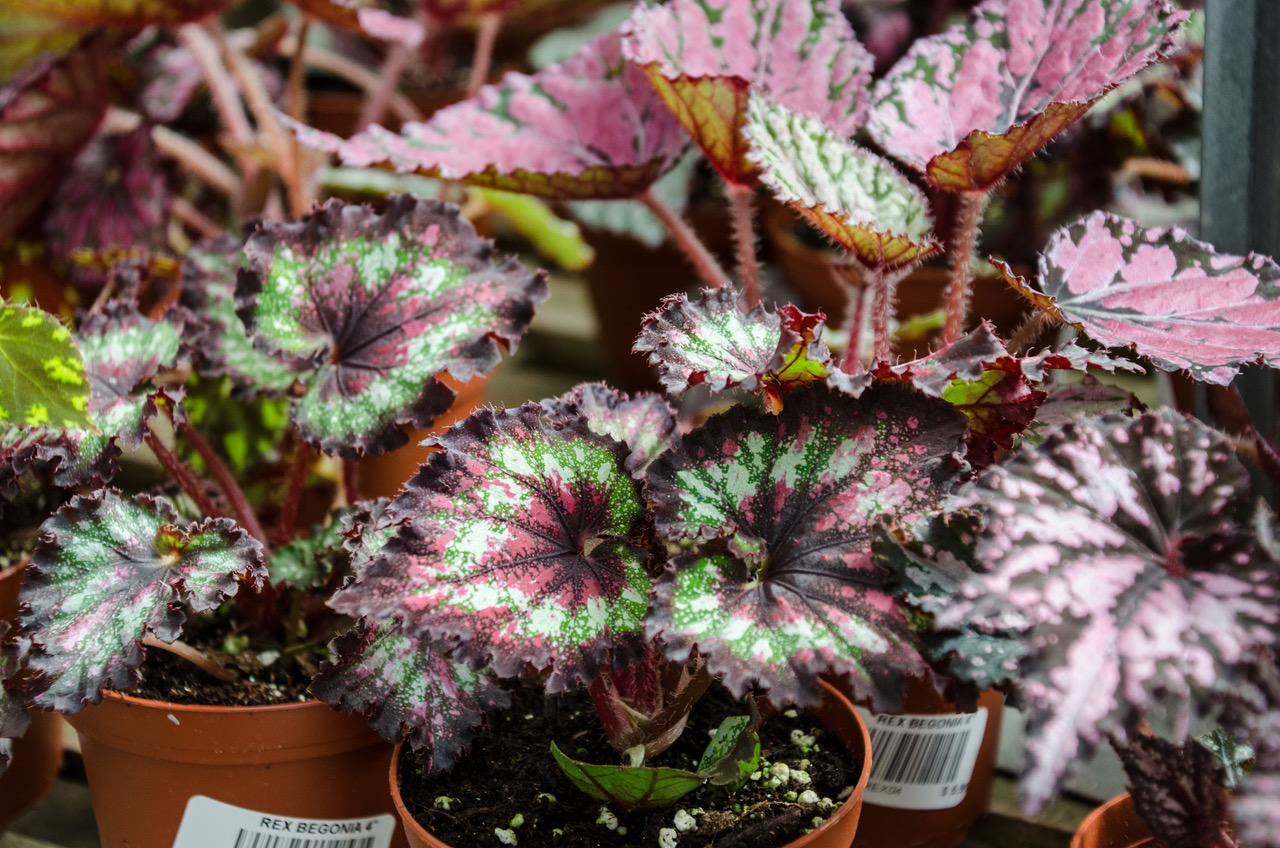
It is strange to think of plants falling either in or out of fashion like a high-waisted pair of jeans. The once highly sought-after Rex Begonia is now a resurgent nod to the Victorian Era where exotic indoor greenery was the obsession of every esteemed socialite in a petticoat. I never assumed them to be an outdated fad. I had grown up visiting my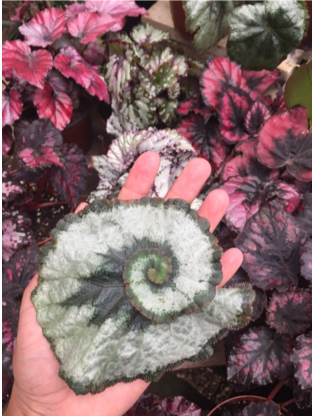 grandmother’s shaded walls of winged, iridescent, caned and waxed leaf begonias hanging in whimsical moss baskets. Every leaf held their own signature explosion of color. Whether the colors were silvery spots amongst sharp dark green foliage, or fiery spirals of red against muted mint leaves, each expression of color exemplified unfaltering beauty.
grandmother’s shaded walls of winged, iridescent, caned and waxed leaf begonias hanging in whimsical moss baskets. Every leaf held their own signature explosion of color. Whether the colors were silvery spots amongst sharp dark green foliage, or fiery spirals of red against muted mint leaves, each expression of color exemplified unfaltering beauty.
What I did falsely assume was that these beautiful begonias must need to be fussed over to stay so showy. I was very wrong with that assumption. As long as there is humidity and warmth in the air Rex Begonias thrive on neglect. I had a skewed understanding of which plants were high maintenance and which plants preferred no maintenance. My grandmother not only had a fascination for begonias, she also had an undeniable affinity for effortlessly growing orchids. Her green thumb was not hereditary in my case. After too many orchids dying by my hands I gave up on the world of showy exotic plants and stuck with tried and true specimens like lantana or zinnias.
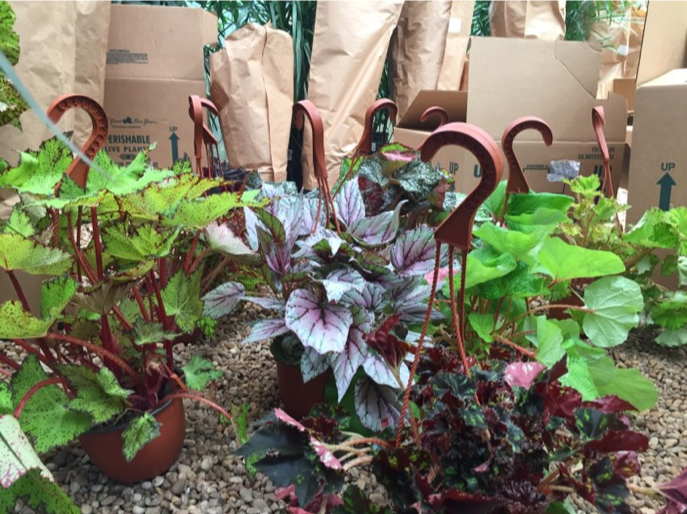
However, I recently gathered enough gall (and information) to get over my intimidation and purchased a Rex Begonia. I will say the hardest part of growing a Rex is deciding which variety to buy. Like other begonia species and other tropical understory plants, the Rex enjoys a shaded, humid, and quiet environment to grow in. Luckily, our summers here in the south are very similar to the tropical monsoon rainforest climate of Assan, India where the original Putzeys’ Rex Begonia (the mother of all the hundreds of present day hybrid Rexes) was cultivated from. This allows them to do well outdoors in zones 10-12. In any other zone they should be brought in during colder months when temperatures begin to consistently drop into the 50’s and 40’s, or treated as an annual.
Most begonia species will go dormant 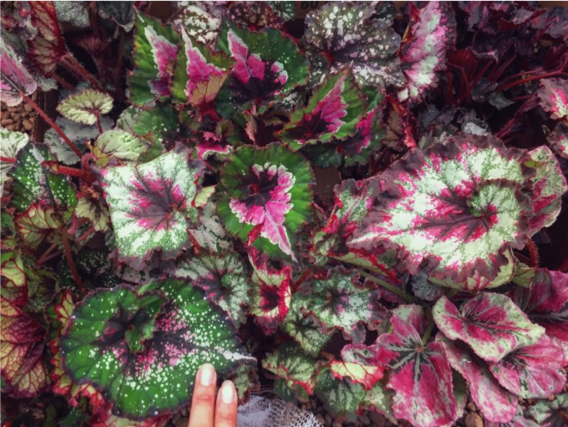 when the temperature drops, and they will drop their leaves in turn. Do not mistake this for a dying Rex and toss it out; be patient and wait for warmer weather. You will see they are still very much alive by producing foliage again in the Spring. Just don’t water them in their dormancy like you would otherwise. Stick to watering them once a month or they will be permanently dormant.
when the temperature drops, and they will drop their leaves in turn. Do not mistake this for a dying Rex and toss it out; be patient and wait for warmer weather. You will see they are still very much alive by producing foliage again in the Spring. Just don’t water them in their dormancy like you would otherwise. Stick to watering them once a month or they will be permanently dormant.
Although Rexes love moisture the surest way to kill them is by over-watering them. If there is any doubt on whether your Rex needs to be watered, you can try the “on demand” method and wait for the plant to tell you when its leaves begin to slightly droop. If that method sounds too risky just make sure that 50% of the top layer of soil is completely dry before adding more water. They prefer their moisture to be in the form of humidity, however, be careful misting them as they are prone to getting powdery mildew from excess moisture accumulating on their stems and leaves. It is safest to use a pebble tray or crowd them together, so they can trap in their own moisture. You will know if the humidity levels are too low for your Rex when the tips of their leaves become brown and crispy.
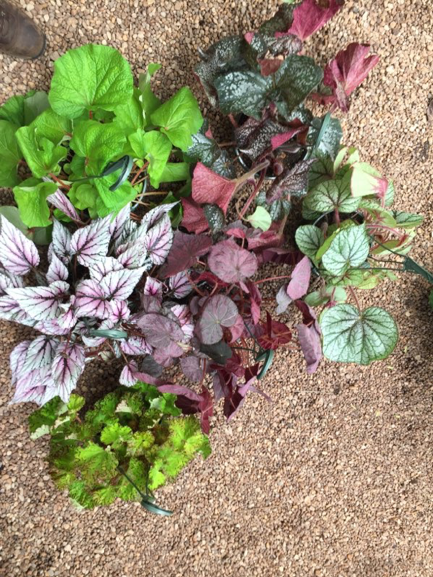 Rexes love being root bound, it is best to keep them in smaller pots and placed on window sills or in covered decks. Choosing the correct type and size of pot is a very important factor in growing a thriving Rex. If the pot being used is too big the soil will stay too wet inviting funguses and rot root. Good advice is to go up one pot size at a time until the Rex reaches maturity. It is better to repot more frequently into a slightly larger pot than one big jump to a much larger pot. The roots need time to grow while staying close enough together to avoid root rot from excess moisture; skipping to a larger pot before the roots are large enough will allow the soil to hold a harmful amount of moisture.
Rexes love being root bound, it is best to keep them in smaller pots and placed on window sills or in covered decks. Choosing the correct type and size of pot is a very important factor in growing a thriving Rex. If the pot being used is too big the soil will stay too wet inviting funguses and rot root. Good advice is to go up one pot size at a time until the Rex reaches maturity. It is better to repot more frequently into a slightly larger pot than one big jump to a much larger pot. The roots need time to grow while staying close enough together to avoid root rot from excess moisture; skipping to a larger pot before the roots are large enough will allow the soil to hold a harmful amount of moisture.
For example, if your Rex is in a 4-inch pot move up in increments of 1-inch until it is in a 6-inch pot. Once it reaches a 6-inch pot you can skip to increments of 2-inches. Wait for the Rex to fill its’ pot with roots before repotting. You can check if it is time to repot by gently pulling the rex up out of its’ pot. If the Rex’s roots hold on to all of the soil it is ready for a bigger pot. If there is still soil left behind when lifted-up, it needs more time (Note: pulling up a Rex gently and carefully from its pot will not hurt it).
Regular repotting is needed for the well-being of young begonias as they reach their maturity and maximum size. Even with plants that you intend to keep in the same sized pot you need to regularly check for degradation of the potting soil. Using quality potting soil keeps the plant flourishing by acting as a fertilizer and by maintaining appropriate moisture levels. The ingredients in potting mix break down over time and will eventually lose its airspaces which leads to poor drainage quality and depletion of oxygen in the soil. Well-drained soil is essential for the happiness of Rexes. To best gauge the drainage quality of the soil being used try and observe during watering if, roughly, 20 percent of the water flows out of the pot. This is mostly important if you are using hard water, aka tap water, which carry a lot of mineral salts. Excessive absorption of mineral salts from sitting in undistilled water will also cause leaf burn in Rexes. If you experience leaf burn and it is not from too little moisture make sure the soil is properly draining or switch to distilled water when watering.

In the end it is a blessing and a curse to have so many varieties of Rex Begonias to choose from. Since they have been hybridized over and over since the 1800’s it is difficult to always know the perfect growing conditions for each variety, because they are mixed with so many varieties. Once familiarized with their array of characteristics you find it easier to ascertain their needs premeditatively. Luckily, these unique plants communicate well when they are unhappy. If you can get through the early days of growth by experimenting on which dappled lighting direction is preferred, or which pot fits snug, you will be blessed by a grateful display of flowery foliage for many years to come—with very little fuss from the lovely and wrongfully illusive Rex Begonia.
Rex Begonias can be found for sale in the Greenhouse at Tallahassee Nurseries.
*This article was written by Rachelanne Cleveland (Tallahassee Nurseries Employee)

